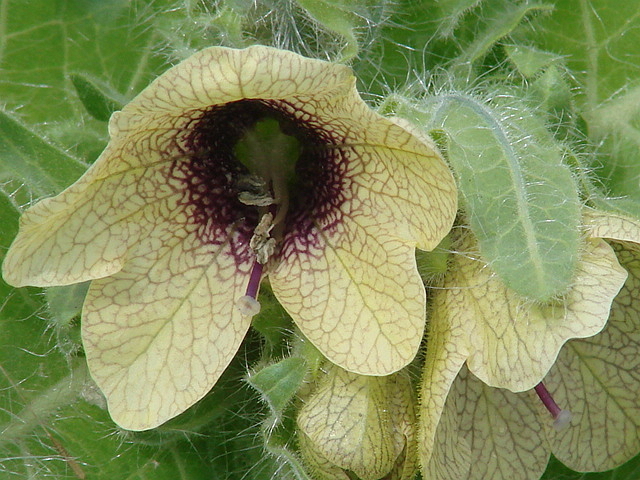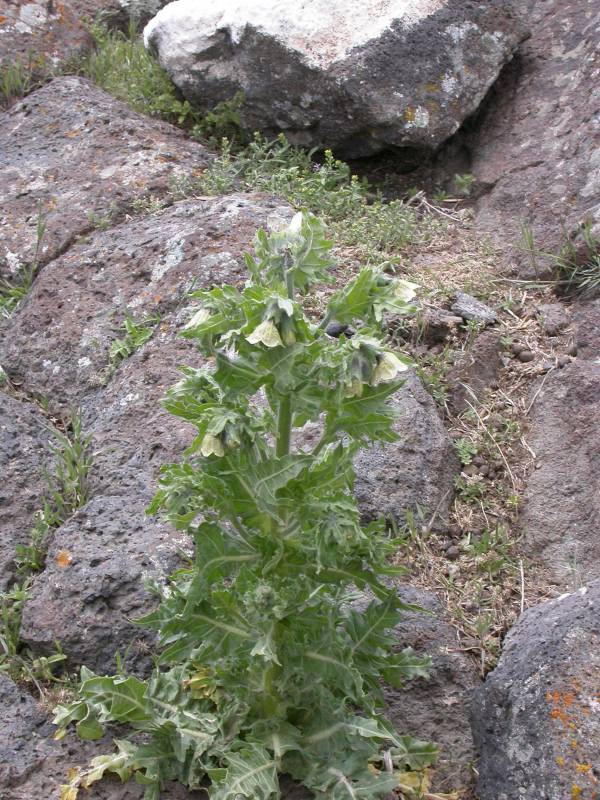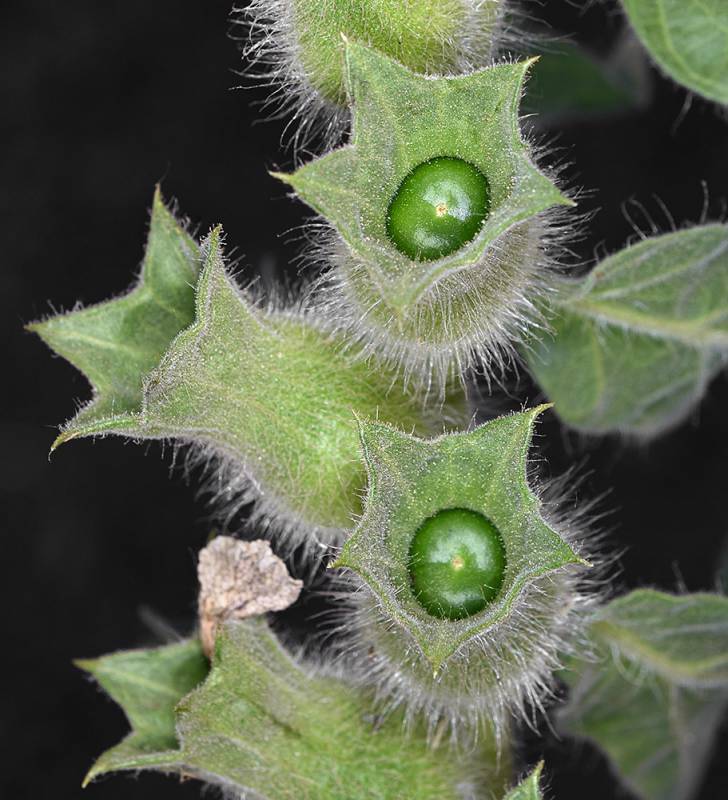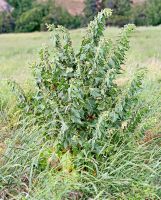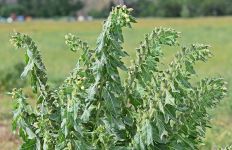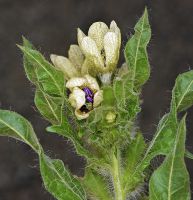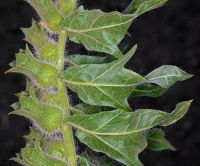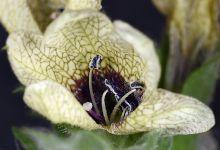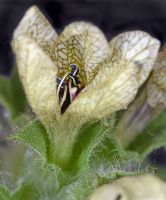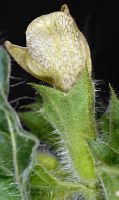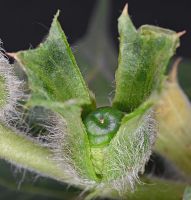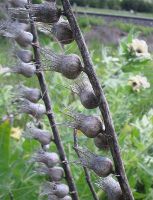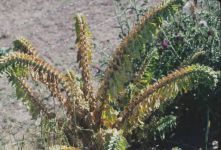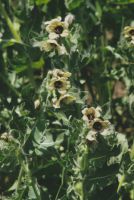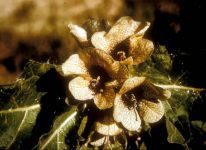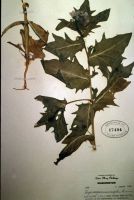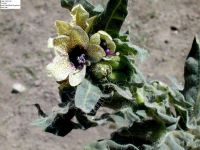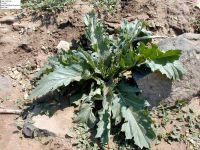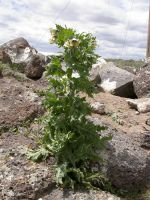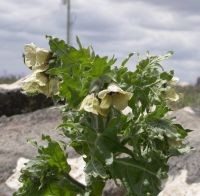Distribution: Occurring chiefly east of the Cascades crest in Washington; Washington to Oregon, east across much of North America to the Atlantic Coast.
Habitat: Roadsides and waste places.
Flowers: May-August
Origin: Introduced from Europe
Growth Duration: Annual
Conservation Status: Not of concern
Pollination: Bees
Coarse, poisonous, fetid biennial or annual up to 1 m. tall, with soft, sticky hairs throughout, but especially on the stem.
Leaves large, sessile, 5-20 cm. long and 2-14 cm. wide, with coarse, unequal, triangular lobes.
Inflorescence a terminal, one-sided, leafy-bracteate raceme; calyx urn-shaped, 2.5 cm. long, 5-toothed, with a network of veins, dry, persistent, enclosing the fruit; corolla pale greenish-yellow with a network of purple veins, funnel-shaped, 2.5-4.5 cm. long, the limb oblique, 5-lobed, 2.5-4.5 cm. wide; stamens 5, exerted, attached to the corolla tube alternate with the lobes; style solitary; ovary superior.
Capsule 2-celled, 1-1.5 cm. long, with a thickened lid.
Publication: Sp. Pl. 1: 179-180. 1753.
PNW Herbaria: Specimen records of Hyoscyamus niger in the Consortium of Pacific Northwest Herbaria database
WA Flora Checklist: Hyoscyamus niger checklist entry
OregonFlora: Hyoscyamus niger information
E-Flora BC: Hyoscyamus niger atlas page
CalPhotos: Hyoscyamus niger photos

